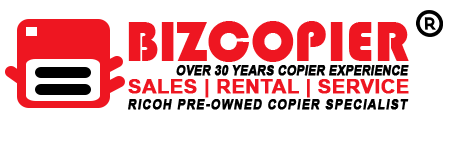Past the Paper Trail: Ricoh’s Quiet Tech Revolution
Some revolutions come with fireworks. Others happen quietly, in the background—methodical, intentional, and relentless. Ricoh’s revolution is the latter. While the tech world obsesses over flashy startups and billion-dollar IPOs, Ricoh—a name most people still associate with office printers—has been rebuilding itself from the inside out, shifting from manufacturing machines to enabling modern work in all its messy, hybrid, fast-evolving glory. This is the story of a company that moved past the paper trail—and what it built instead. 🧾 The Legacy: Built on Paper, Powered by PrecisionRicoh was once synonymous with paper. From high-volume copiers to multifunction printers, it helped businesses manage documents before “the cloud” was even a buzzword. The company’s engineering DNA made it a giant in imaging and output tech, with millions of devices installed worldwide. But by the early 2010s, the writing was on the wall. Paper was fading. Cloud services were rising. Work was becoming less about files and more about flows—of data, communication, and collaboration. Ricoh could have dug in. Instead, it did something bolder: it evolved. 🔧 Reinvention Without the NoiseWhile others pivoted loudly, Ricoh began a quiet transformation. It didn’t just slap cloud features onto its devices or rebrand services. It rebuilt its identity, one layer at a time: Shift to Digital Services: Ricoh expanded into workflow automation, cloud document management, and workplace analytics. Managed IT & Security: It developed capabilities to handle endpoint protection, infrastructure support, and compliance—areas far removed from its hardware roots. Smart Office Enablement: Through IoT and AI integrations, Ricoh turned traditional office spaces into intelligent, responsive environments. Sustainability as a Service: Ricoh didn’t just go green—it started helping other companies reduce their environmental impact, digitizing paper-heavy processes and optimizing energy use. This wasn’t a PR stunt or a trendy pivot. It was a long-game strategy backed by years of R&D, acquisitions, and cultural transformation. 🌍 Global, Yet LocalPart of Ricoh’s strength lies in its localized service delivery, even as it rolls out a global tech strategy. Whether it’s optimizing workflows for a healthcare provider in the UK, enabling secure printing for a financial firm in Singapore, or deploying hybrid collaboration tools for a university in Canada—Ricoh adapts to local realities with global expertise. The result? A footprint that’s everywhere, but never loud. Reliable, not flashy. Essential, not optional. 🔮 What the Future Looks LikeRicoh’s next chapter is less about what it sells and more about what it solves. As organizations grapple with hybrid work, data sprawl, sustainability mandates, and security threats, Ricoh is positioning itself as a trusted operational partner, not just a vendor. AI-driven analytics to optimize workflows Cloud-native document ecosystems for remote teams Zero-trust print environments to protect data in the wild Workplace-as-a-Service models to modernize IT without massive upfront costs And yes, they still make printers—but now, those printers talk to the cloud, report back analytics, auto-update their firmware, and fit neatly into modern cybersecurity strategies. It’s a far cry from the toner-dusted machines of old. 🧠 The Real RevolutionThe tech world is full of noise. But Ricoh proves that you don’t need hype to drive impact. Sometimes, the biggest transformations happen behind the scenes—led by companies that understand their customers, their pain points, and the deeper shift in how we work. Ricoh’s revolution wasn’t loud. It was deliberate, holistic, and global. And now, it’s impossible to ignore.

Recent Comments